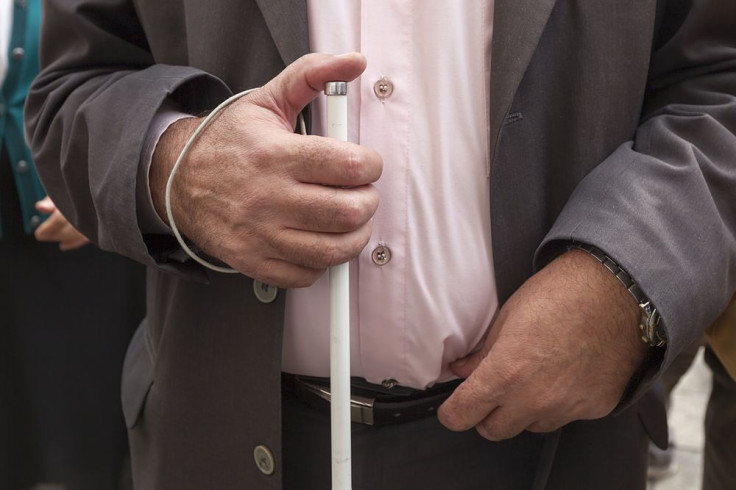Visually Impaired Will Benefit From New Infrared Device: Enactive Torch Helps The Blind To 'See' Without Canes

“The white cane gives you a lot of information, but there are a few things that get me: chairs and tables (my cane slips underneath), overhanging brush (again, my cane isn’t high enough), and cracks (sometimes my cane will bounce back, which is annoying),” Quora user Cristina Hartmann said in response to someone asking what it’s like to be blind.
Getting around is probably one of the harder things to deal with as a blind person, and canes and seeing-eye dogs are really the only tools they have to help — human guides can be insensitive to their needs. A new device developed by Tom Froese and Adam Spiers, who studied in the Department of Cybernetics at the University of Reading, UK, and tested by researchers at the University of Cincinnati, however, may usher in a new age of navigational tools for the blind.
As the first device of its kind, the Enactive Torch looks like a large remote control connected by wire to a wristband. It works similarly to a white cane. However, it doesn’t need to touch anything to inform the person using it that there’s an obstacle in their way. Instead, it uses infrared sensors to detect objects in front of it, after which it sends a signal to the wristband to vibrate. As the object comes closer, it vibrates with more intensity. The new study, which will be presented at the American Psychological Association’s annual convention in Washington, D.C., found that the Enactive Touch worked just as well as normal vision when it came to navigation.
“When you compare the participants’ judgments with vision, cane, and Enactive Torch, there was not a significant difference, meaning that they made the same judgments,” said Luis Favela, a graduate student in philosophy and psychology at the university, in a press release. “The three modalities are functionally equivalent. People can carry out actions just about to the same degree whether they’re using their vision or their sense of touch. I was really surprised.”
The Torch was able to safely navigate visually impaired participants through an opening similar to a doorway just as well as anything else. In all, 27 undergraduate students with normal or corrected-to-normal vision were told to walk through the opening either using normal vision, a cane while blindfolded, or the Enactive Torch while blindfolded. Although it’s unclear how the device would work in real-world situations (when coming across an empty cardboard box in the street, for example), its creation shows that navigational tools for the blind may soon be upgraded.
According to the Centers for Disease Control and Prevention, over 3.4 million Americans aged 40 and older are legally blind or visually impaired. That number is expected to rise to six million by 2030, as more baby boomers develop diabetes and age-related disease. But the device, or its future renditions, will also be good for kids who deal with growing up blind. “In my research, I’ve found that there’s an emotional stigma that people who are visually impaired experience, particularly children,” Favela said. “When you’re a kid in elementary school, you want to blend in and be part of the group. It’s hard to do that when you’re carrying this big white cane.”
Considering that the Enactive Torch is the size of three to four remotes stacked together, children would still have to carry it around to get around. However, Favela says that future renditions will be “smaller and more compact” so that kids who use it won’t stand out, and maybe “feel like they blend in more.” But before that can happen, further tests to assess its ability to help people step over obstacles or climb stairs, are needed, he said.
Source: Favela L, Riley M, Shockley K, Chemero A. Augmenting the Sensory Judgment Abilities of the Visually Impaired. At The Annual Convention of the American Psychological Association. 2014.



























